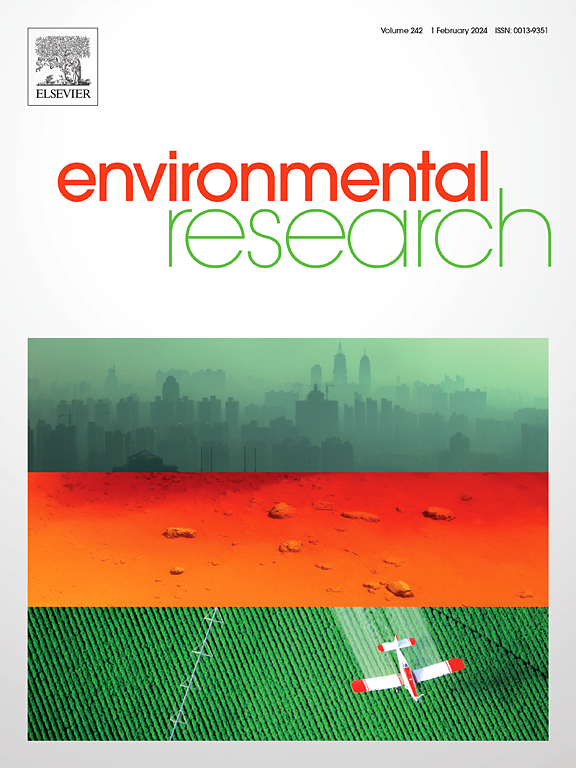Identification of novel strain Acinetobacter baumannii H1 and its improvement capacity for nutrient removal after coimmobilized on activated carbon and CaCO3 in real aquaculture wastewater
IF 7.7
2区 环境科学与生态学
Q1 ENVIRONMENTAL SCIENCES
引用次数: 0
Abstract
A new strain H1, Acinetobacter baumannii, exhibited the 96 % nitrogen and 76 % phosphate removal efficiencies in suspension environment after 48 h, and the optimal conditions were obtained at pH of 7–8, temperature of 30 °C, carbon source of succinate, carbon-nitrogen ratio of 10 and phosphorus-nitrogen ratio of 0.2, respectively. The immobilization experiments with activated carbon and CaCO3 were carried out, the optimal formula was 30 g/L CaCO3, 15 g/L activated carbon-bacteria complex, 2 % CaCl2 and a 1:1 embedding agent ratio. The removal efficiency of NH4+-N, total nitrogen, total phosphorus and chemical oxygen demand in immobilized H1 was 288.89 %, 121.87 %, 135.69 % and 667.21 % higher than that by free strain in group With Indigenous Bacteria, respectively. Under the real water environment, the nitrogen concentrations in the immobilization groups were 3–4 times lower than those of the suspension groups, and the abundances of N and P metabolism-associated bacterial communities (Proteobacteria and Patescibacteria) were higher in the immobilization groups. These results provided an approach for the practical application in aquaculture tailwater treatment.
新型鲍曼不动杆菌H1在实际养殖废水中活性炭和CaCO3共固定化后的鉴定及其对营养物去除能力的提高
新菌株H1鲍曼不动杆菌在悬浮环境中48 h的脱氮效率为96%,脱磷效率为76%,最佳条件为pH 7 ~ 8,温度30℃,琥珀酸碳源,碳氮比为10,磷氮比为0.2。采用活性炭和CaCO3进行固定化实验,最佳配方为CaCO3 30 g/L、活性炭-细菌复合物15 g/L、caco2 2%、包埋剂比1:1。固定化H1对NH4+-N、总氮、总磷和化学需氧量的去除率分别比游离菌组高288.89%、121.87%、135.69%和667.21%。在真实水环境下,固定组的氮浓度比悬浮液组低3-4倍,而与N和P代谢相关的细菌群落(Proteobacteria和Patescibacteria)的丰度则高于固定组。这些结果为实际应用于水产养殖尾水处理提供了途径。
本文章由计算机程序翻译,如有差异,请以英文原文为准。
求助全文
约1分钟内获得全文
求助全文
来源期刊

Environmental Research
环境科学-公共卫生、环境卫生与职业卫生
CiteScore
12.60
自引率
8.40%
发文量
2480
审稿时长
4.7 months
期刊介绍:
The Environmental Research journal presents a broad range of interdisciplinary research, focused on addressing worldwide environmental concerns and featuring innovative findings. Our publication strives to explore relevant anthropogenic issues across various environmental sectors, showcasing practical applications in real-life settings.
 求助内容:
求助内容: 应助结果提醒方式:
应助结果提醒方式:


